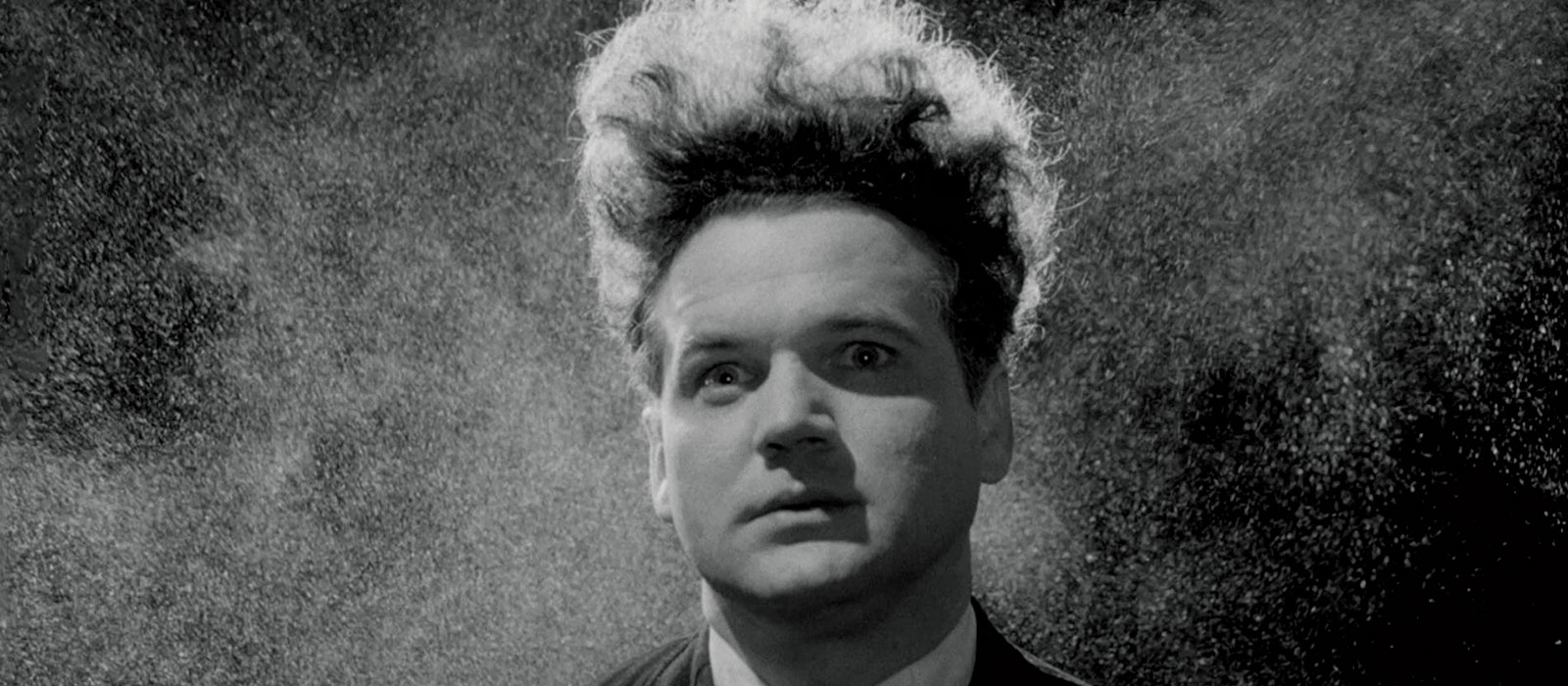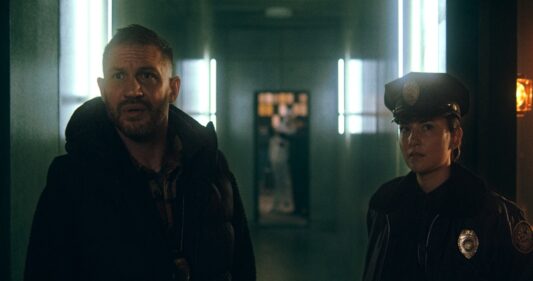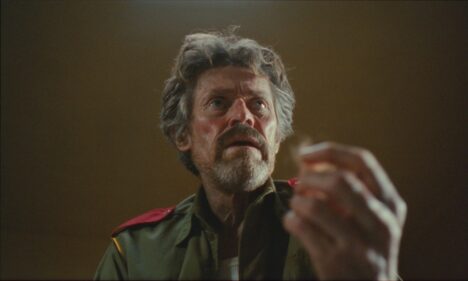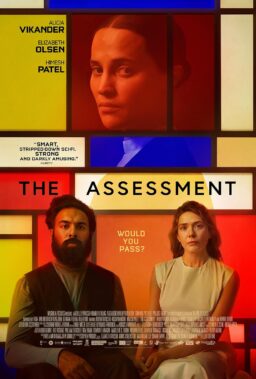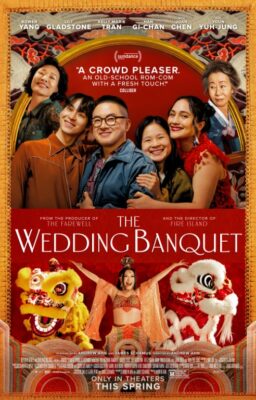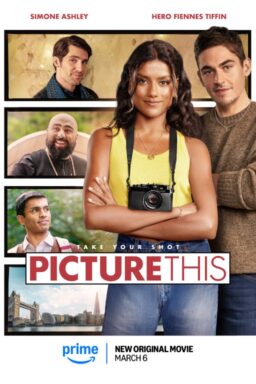“It’s hard to imagine anyone sitting down and reading these pedestrian commentaries. To a field already overloaded with fluff, Peary brings precious little.” — From a 1989 Los Angeles Times book review of “Cult Movies” and “Cult Moves 2” by Danny Peary
Actually, it’s hard to imagine any critique that was so wrong about its subject. Few movie books have endured and continue to influence cineastes with a taste for the offbeat and overlooked than 1981’s “Cult Movies: The Classics, the Sleepers, the Weird and the Wonderful” as well as its two sequels.
Thirty-five years ago, when VCRs were on the brink of revolutionizing American rec-rooms but before “Googling” became a verb, New York-based author Peary, now 66, published his first collection of must-see titles with detailed summaries and insightful commentaries. The 100 eclectic entries that made the cut had one thing in common: A passionate cult following. That meant familiar offerings from Hollywood’s golden age such as “Casablanca” and “The Wizard of Oz” found a place in the original volume, which has been reprinted several times. But so did such lesser-known fare as G.W. Pabst’s silent “Pandora’s Box” from 1929, Jacques Tourneur’s “I Walked With a Zombie” from 1943 and Walter Hill’s “The Warriors” from 1979.
It quickly became a matter of completist pride to hunt down the more hard-to-find movies, especially in the days before video rental shops were commonplace. Even today, there are web sites devoted to Peary’s picks, most notably filmfanatic.org. In 2014, Workman Publishing put out three genre e-books with 100 films culled from Peary’s trilogy, which is out of print otherwise.
One of the author’s more zealous acolytes is Brian Saur, a 41-year-old music supervisor and blogger, based in Los Angeles who is currently working on a documentary about his idol.
“I first discovered Danny Peary’s books at the library of the University of Wisconsin in Madison, where I attended college in the mid-1990s,” he says. “It was a nice coincidence to be introduced to them on the very campus where Danny had been part of his own film society some years earlier. I believe the library there had all three volumes of “Cult Movies” (2 and 3 combined added 100 more films to Peary’s cult canon) and I absolutely devoured them.”
It’s likely that Saur would never have searched out such films as “Targets,” “Seconds,” Rock ‘n’ Roll High School” and “Cutter’s Way” without Peary’s seal of approval. He went so far as to change his major from zoology to radio/TV/film because of his newfound pursuits. He even has a tattoo on his left shoulder that pays homage to the cover of another Peary classic, 1986’s “Guide for the Film Fanatic,” which features capsule summaries of more than 1,600 movies.
But by the early 1990s, Peary—worn out by his research for that hefty 500-page-plus book that required numerous sojourns to Manhattan art-houses—decided to cut back on movie writing (although he does film stories for the online version the “Sag Harbor Express”) and devote himself to chronicling his other great obsession, baseball. He has done three books with friend and onetime player Tim McCarver and works as a writer-researcher for the former catcher’s syndicated sports TV show. Peary’s latest tome on America’s favorite pastime, “Jackie Robinson in Quotes: The Remarkable Life of Baseball’s Most Significant Player,” arrives this week timed to the 70th anniversary of the sports legend’s start in organized baseball.
Although Peary rarely does film-related interviews these days, he gladly submitted to doing his own version of the time warp (yes, “The Rocky Horror Picture Show” is included in the first “Cult Movies”) to reflect upon his own status as a cult figure among movie lovers.
Did you actually invent the term “cult movies”?
What I did was, I took away the title from anyone else using it. After I wrote [“Cult Movies 1”] and [“Cult Movies 2”], I would get many fan letters that said, “I love your books. Do you mind if I write ‘Cult Movies 3?’” I felt a little guilty. But if anyone did write about the subject, they usually gave a credit acknowledgement that saved me from suing them. But they were sincere in their appreciation. I must say, I got treated better than anyone, even if I wrote negatively about “The Wild Bunch.” People rarely attacked me.
Your older brother, Gerald, is also a well-regarded film writer. Were your parents concerned when both of their sons decided to build their careers around movies?
They were always proud of us. Rock ‘n’ roll, sports, TV, movies—those were my passions. My mother grew up in Romania and collected movie star cards. She loved movies, too. When I was nine or ten, I would go downtown by myself. You could do that in the 1950s. I would see a movie and then watch it a second or third time. Three of those films made a big impression on me: “Land of the Pharoahs,” “Rebel Without a Cause” and “The Searchers.” I saw those over and over again. That is part of what defines a cult movie. I also loved sci-fi, especially “Invasion of the Body Snatchers” and ‘The Thing.” I watched “King Kong” on WOR-TV’s “Million Dollar Movie.” I watched the Tarzan movies over and over on “The Early Show.” I had a big crush on Maureen O’Sullivan. I wanted to be Johnny Weissmuller and I wanted to own Cheetah. I loved cowboy films and was a big Gene Autry fan. I enjoyed horror, too. I finally saw “Psycho” when I was 11, and nothing scared me after that.
What was the first movie you recall seeing?
“Jack and the Beanstalk” from 1952 with Abbott and Costello. I saw the genius in them even if others considered them lowbrow, along with The Three Stooges. I watched all 52 episodes of their TV show back then. Many didn’t put them in the same league as The Marx Brothers and Laurel and Hardy. That is also a trait that defines cult movies and actors. They are often the source of heated debates and arguments. You draw a circle around the people you love and admire.
You have written or edited nine movie books, but the first “Cult Movies” probably remains your most popular. The write-ups you did regularly contained harsh criticism since some these films aren’t all that well-acted, written or directed. But even if your fans disagreed with your assessment of their favorites, they paid attention to what you had to say.
Part of my appeal was that I was never mean or critical of people liking films that I didn’t like. I didn’t act like I was the only one with an opinion. I invited people to disagree with me and encouraged people to see these movies. I didn’t come out of academia or write for a magazine or newspaper. I was just a strange outsider publishing books.
Why baseball and movies? Where do they intersect?
They both have to do with passion. My brother and I were first-generation Americans. Our relatives were from Russia, Romania and Israel before they settled here. I would teach them baseball. I was a big fanatic. There are people who say it is boring just to sit and watch a game. But then there are people like me who know it really well. We know there is something behind every pitch and how it leads to the next pitch. A game within game. The more you dig into baseball, the more you love it. It’s kind of the same thing with cult movies. The more you know about it, the more you like it. Some see “The Searchers” and just go home. Others dissect it. There is a communal aspect to cults. You want to share your love with other people. My original books came out before the Internet. I made people aware there were others out there like them. I still get so much fan mail that basically says, “Thank you. When I was young, you opened a whole world to me.” People send me pictures of their book covers. It is very gratifying. People didn’t realize these films existed and that they shared something in common with other people. Something like “The Little Shop of Horrors” from 1960, which I assumed everyone knew, was a discovery for many.

Around the time the first “Cult Movies” book came out, subversive midnight movies were all the rage—most notably, “The Rocky Horror Picture Show,” “El Topo,” “The Harder They Come,” “Pink Flamingos” and “Eraserhead,” all of which found their way into your first book. And two notable collections on the subject—both titled “Midnight Movies”—came out in 1983, one by Stuart Samuels and the other by J. Hobrman and Jonathan Rosenbaum. Then there were the Medved brothers, Michael and Harry, who specialized in riffing on bad films with their “Golden Turkey” book series. But your cult concept expanded upon those universes quite a bit. How did that happen?
The term “cult’ was often used when discussing midnight movies. But I noticed that it went beyond really obscure films that lost money. I always heard of a Humphrey Bogart cult or a James Dean cult. That people talked back to the screen when they watched “All About Eve.” “The Cabinet of Dr. Caligari” (a 1920 silent horror film from Germany) played in the same theater in France for seven years straight. I simply expanded on what cult movies were. Saying “Casablanca” had a cult was stating a fact. I was the type of person who liked all kinds of films, from “Citizen Kane” to Ed Wood movies like “Plan Nine From Outer Space” and “Glen or Glenda.” Part of the appeal for me was bringing together all kinds of genres.
Those “Midnight Movies” books were published after “Cult Movies.” You sort of made them superfluous because VHS tapes and VCRs were about to make that in-theater experience available at home. Your first volume hit just before the tape rental craze began. The first tape I ever checked out was “Eraserhead,” since it was hard to see outside of a midnight screening. And I think I first learned of it from your book.
J. Hoberman acknowledged there was a competition. But the Medved brothers were even more in competition with me. I kind of admired their books. But I wasn’t into the glamorization of bad movies. Let’s go see bad films rather than a good one. Eventually, they ran out of titles. But they did well. My “Guide for the Film Fanatic” was very popular in video stores. That is why I put a check list in the back, so people could keep track. They would see the films and then see what I wrote. That was part of the appeal. “Did he agree or disagree with me?” Or, “why didn’t I think of this observation?” VCRs made people feel like they were getting away with stealing something by watching a movie at home. Same thing with cable. First time I got HBO and saw nude women on the screen, I thought, “Oh, my God!” You felt the excitement of getting away with something. VCRs are fabulous. I am so sad about their demise. My books did come out at right time.
I had forgotten how you intentionally left out “Gone With the Wind” and Star “Wars” — as well as “E.T.” from your later two books—because, as you noted, nearly every fan of those films responds to them in much the same way. Whereas other similar classics that are far from obscure such as “Casablanca,” “Citizen Kane,” “It’s a Wonderful Life,” “The Maltese Falcon,” “All About Eve” and “The Searchers” you included. Why did something like “The Wizard of Oz” earn a place in the spotlight when everyone saw it on an annual basis on TV for a while.
I go back and forth on “The Sound of Music,” but those films were marketed to a mainstream audience. I just couldn’t define “Gone With the Wind” within my own head as a cult movie. I don’t see a separate cult for it. It is still marketed the same way. Whereas there has always been an obsessive small cult associated with “The Wizard of Oz.’ They will go to a film program on a campus to watch it even if it is readily available on TV. The films I picked aren’t the only cult movies but they were ones that I had interesting observations about to share.
When your books came out, many of the titles you included were often hard to see even when midnight movies and repertory houses were thriving. I had to wait many years until I was able to hunt down Jerzy Skolimowsky’s “Deep End” from 1971, a drama about kinky doings in a public bath house that starred both Jane Asher, Paul McCartney’s onetime girlfriend, and British bombshell Diana Dors. It was also hard to locate Michael Powell’s “Peeping Tom,” the notorious voyeuristic thriller from 1960. I had never heard of the films until I read your book.
People told me James Gray (director of “The Yards” and “The Immigrant”) says he first learned of “Deep End” from my book and searched a long time to find it. There is no doubt both “Deep End” and “Peeping Tom” are cult movies.
You must have have gotten your share of fan mail in the years before email existed.
I got loads. Not on a Taylor Swift-level, but pretty consistent. I got calls, too. My wife would go crazy, they gave her the creeps when they asked, “Are you the Danny Peary who writes those cult books?” or “You don’t know me, Mr. Peary, but I had a dream where I met you.” Sometimes, I am surprised by who knows who I am because of the books. Larry Karaszewski, who co-wrote the TV series “The People vs. O.J. Simpson,” paid me a great compliment. He said there would have been no movie about Ed Wood (the 1994 biopic Karaszewski co-wrote that was directed by Tim Burton) without my cult movie books.

Because this is appearing on RogerEbert.com, I must ask you about your reaction in the first “Cult Movies” to his collaboration with director Russ Meyer, “Beyond the Valley of the Dolls.” It is common knowledge that Roger wrote the rather campy screenplay for the so-called “King of the Nudies” with its plot revolving around the adventures of an ambitious and sexually adventurous all-girl rock band. While you express appreciation for Meyer’s earlier features, such as “Vixen” and “Cherry, Harry, and Raquel,” you are rather down on “Beyond.” Your main objection to his first production for a big studio, 20th Century Fox is: “Instead of making a cliché-filled parody of skin flicks, Meyer now made a cliché-filled parody of overblown Hollywood soap operas.” It’s true that the plot regularly defies logic, but I confess to having a soft spot for John LaZar’s outlandish music mogul Z-Man, especially since he is the source of the movie’s most quotable line: “This is my happening and it freaks me out!”
One of the first interviews I ever did was with Erica Gavin, who starred in “Vixen” and Jonathan Demme’s “Caged Heat.” I met her in a lobby with friends many years ago. We are Facebook friends now. She wanted to be a lead in “Beyond the Valley of the Dolls” but Meyer gave her a minor part. I had been part of the bandwagon who championed him. But “Beyond” to me was a real disappointment at the time. His earlier work was fast-paced like “Lorna” and “Mudhoney.” Not as good as Don Siegel, but it had grit and humor. I had hope for him as he moved into the mainstream. But seven minutes into “Beyond the Valley of the Dolls,” I knew something was not right. I thought a lot of the tone shifted in the movie. It became mean and ugly, and that took a lot of enjoyment away from the biggest cult movie he is probably best known for. A lot of the personalities of the characters were inconsistent, they weren’t the same people from scene to scene. It’s not totally worthless. The music is part of the fun. At least it keeps Russ Meyer’s name out there.
I know you are deeply embedded in the world of sports these days. But would you ever consider doing a “Cult Movies 4″? One of your fans actually did his own version of a fourth volume online.
Since publishers don’t seem interested in movie books anymore, I will wait for an enthusiastic publisher to come to me, as happened with Workman and the e-books. I don’t see it happening but who knows? I have an ever-changing cult movie list just in case–and there are enough titles for several new books.
Finally, if you had to pick one title from your original “Cult Movies” to watch every day of the rest of your life, what would it be?
“Tarzan and his Mate.” For some reason, I would watch that over and over again. I guess it’s the little kid in me still. I could go in different directions with it and watch it with someone who knew a lot about movies or not. I have so many memories from sitting in front of a TV set, watching “The Early Show.” It’s not my favorite film of all time. But I have seen it about 30 times at least.

